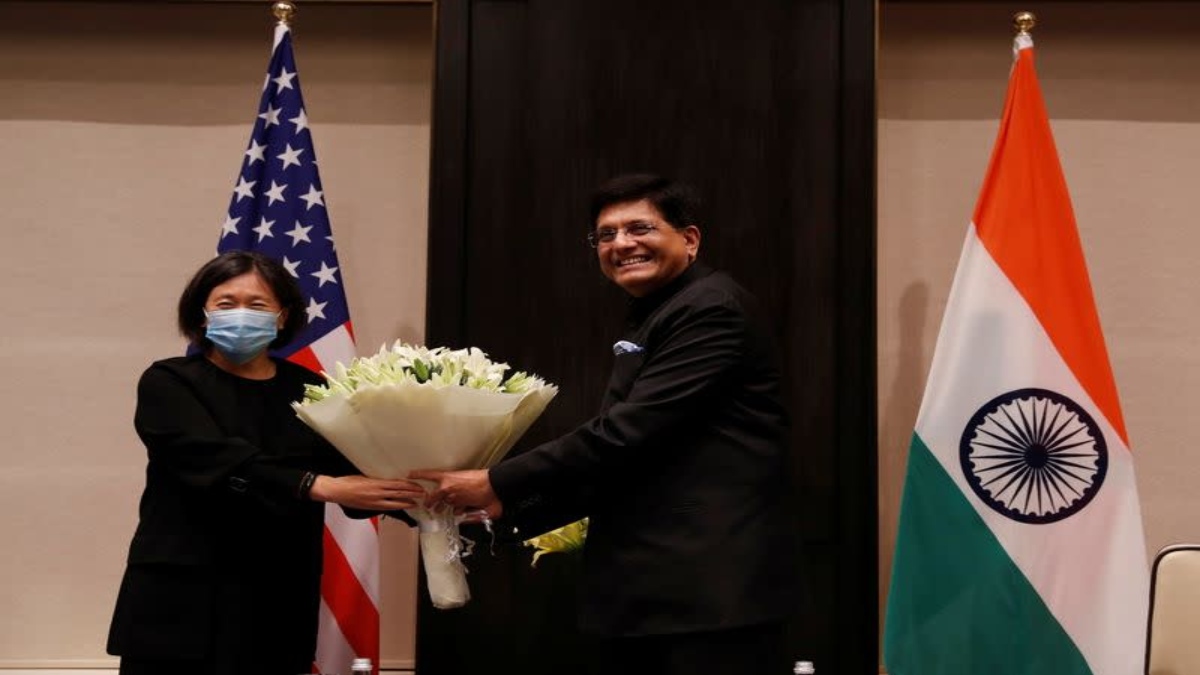


It is becoming increasingly clear that contrary to earlier fears, under President Joe Biden, India-US partnership is on track to achieve greater heights. That he, like his predecessor Donald Trump, understands the significance of this relationship, not just as a means to contain China but also to explore the full potential of having the world’s two most robust democracies being on the same page on a host of issues—from a secure and open Indo-Pacific to climate change, health and trade. This became clearer during US Trade Representative Katherine Tai’s visit to India this week, with speculation starting if India and the US have taken the first steps towards a much elusive trade deal. There was much excitement in 2019 that India would be able strike a trade deal with the US when Prime Minister Narendra Modi was visiting the US, but apparently, the US side under President Trump was not keen on any such deal and were asking for too many concessions—remember Mr Trump throwing tantrums about Indians imposing a high import duty on Harley Davidson? Lest we forget, it was during the Trump presidency that the then US Trade Representative, Robert Lighthizer withdrew the itsy-bitsy concessions that India was receiving under the “Generalized System of Preferences” (GSP), which gives certain tariff concessions to developing and least developed countries exporting their products to the US. This in turn impacted around 12% of India’s exports to the US. India had exported goods worth $6.3 billion under GSP in 2018.
That a lot of ground since 2019 has been covered became apparent from the joint statement issued by the United States-India Trade Policy Forum post the meeting between Union Commerce Minister Piyush Goyal and United States Trade Representative Katherine Tai in New Delhi, saying that the US would consider India’s request for restoring India’s GSP “beneficiary status”.
It was also significant that the United States-India Trade Policy Forum (TPF) was revived after a gap of four years. As Ambassador Tai said, “The trade relationship between our two countries is a priority, both for President Biden and for me. That’s why it was important for me to come to India and relaunch the Trade Policy Forum on my first trip to Asia.” There were some worries about India-US trade ties in the last four years, that were not helped by US companies such as GM, Harley Davidson and Ford leaving the country. Ford shutting its manufacturing in India has hurt India in particular, as the company was sending cars to the US from its Indian plant and with their exit, around 4,000 Indian employees and thousands more in the ancillary industries have been affected. But these hiccups have not stopped India-US bilateral merchandise trade witnessing a “robust rebound” in the January-September 2021 period. As the joint statement pointed out, this “showed almost 50 per cent growth over the same period in the previous year; bilateral merchandise trade in the current year is poised to surpass US$ 100 billion mark”. As Katherine Tai had pointed out on Monday, there was a huge potential for India-US trade particularly in areas such as the digital economy, services, health-related trade, and agriculture. Hence, it was all the more necessary for a platform like the TPF to be revived, so that it can lead to “regular engagement” to address “outstanding bilateral trade concerns and allow the two countries to explore important, emerging trade policy issues”. The TPF working groups on agriculture, non-agriculture goods, services, investment, and intellectual property are also being revived to address “issues of mutual concern” regularly.
The meeting took place in keeping with what Prime Minister Modi and President Biden had said in their 24 September 2021 bilateral—of developing “an ambitious, shared vision for the future of the trade relationship”. Taking off from there, it is but natural that the two countries would speak of the importance of India-US “trade and economic partnership in addressing global challenges”—the biggest challenge/dragon in the room being China. Hence, with the aim of achieving a “shared vision of a transparent, rules-based global trading system among market economies and democracies”, the two countries also promised to work “collaboratively and constructively in relevant multilateral trade bodies including the WTO, the G20, and the OECD”. The sub-text in all this is the need to counter China’s violation of a “rules based global order”, be it in the Indo-Pacific or in different economic fora.
The two sides also discussed securing global supply chains, and the importance of critical and emerging technologies and how all these issues are being worked upon inside the Quad framework. There was also mention of the need for “regular sharing of perspectives on…cyberspace, semiconductors, AI, 5G, 6G and future generation telecommunications technology”.
In other words, if the two democracies join hands, their economic influence can go a long way in counterbalancing Chinese influence on the world. Observers see in this the seeds of an India-US trade pact being sown. And if a trade pact takes place, will some sort of a security pact also become a reality? After all, no containment strategy can work by divorcing trade from security and vice versa. It should not come as a surprise to anyone if Beijing is found to be watching these meetings closely.